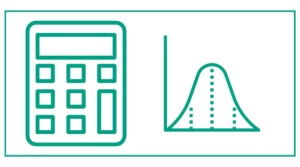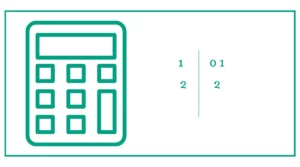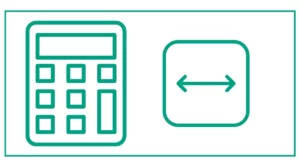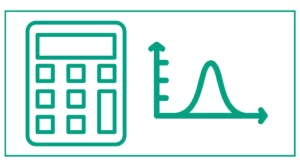Square Root Curve Calculator
The square root curve calculator helps you convert the percentage of students’ grades into square root curve grades.
Enter the student’s percentage grade and click the calculate button to calculate the square root curve.
If’re not familiar, the square root grading curve is a technique that adjusts the grades of a whole class to align them more closely with expectations. It serves to address challenging tests or to establish a standard for difficult courses.
The formula of the square root curve grade is:
SRG=SQRT(G)∗10
- SRG= Square root curve grade
- G= Student’s percentage
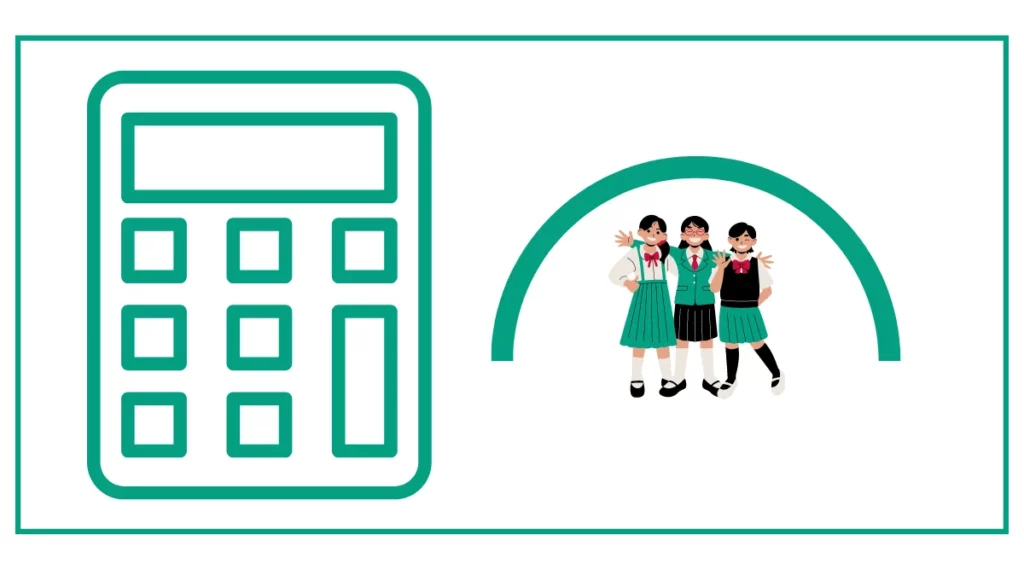
You might be interested in finding the 5-number summary or figuring out what the grade curve is.
What is a Square Root Curve?
A square root curve is a mathematical function used to adjust grades in a way that can benefit students while maintaining academic integrity. It involves taking the square root of a student’s percentage grade and multiplying it by 10 to create a curved grade. This method can help to boost lower scores more significantly than higher ones, potentially providing a more balanced distribution of grades across a class.
The Square Root Curve Formula
The formula for calculating a square root curve grade is:
Curved Grade = √(Original Percentage) × 10
For example, if a student scores 64% on a test, their square root curve grade would be:
√64 × 10 = 8 × 10 = 80%
This transformation can be particularly helpful in cases where test scores are lower than expected or when a teacher wants to adjust the grade distribution without compromising the integrity of the assessment.
How to Use a Square Root Curve Calculator
A square root curve calculator is a tool designed to simplify the process of applying this grading method. Here’s how to use one:
- Enter the student’s original percentage grade into the calculator.
- Click the “Calculate” or “Submit” button.
- The calculator will instantly provide the curved grade based on the square root formula.
Using an online square root curve calculator can save time and reduce the chances of mathematical errors, especially when dealing with multiple grades or complex calculations.
Example of Using a Square Root Curve Calculator
Let’s consider two examples to illustrate how a square root curve calculator works:
Example 1:
Original grade: 49%
Square root curve grade: √49 × 10 = 7 × 10 = 70%
Example 2:
Original grade: 81%
Square root curve grade: √81 × 10 = 9 × 10 = 90%
As you can see, the square root curve has a more significant impact on lower grades, potentially helping struggling students while still maintaining a reasonable curve for higher-achieving students.
Benefits of Using a Square Root Curve
Implementing a square root curve can offer several advantages in educational settings:
- It provides a more generous curve for lower scores, potentially helping students who are struggling with the material.
- The curve becomes less pronounced for higher scores, maintaining a level of distinction for top-performing students.
- It can help normalize grade distributions in cases where tests or assignments prove more challenging than anticipated.
- The square root function creates a smoother, more gradual curve compared to some other curving methods.
When to Apply a Square Root Curve
Teachers and educators might consider using a square root curve in the following situations:
- When test results are lower than expected across the board.
- To adjust for an unusually difficult exam or assignment.
- In classes with a wide range of student abilities, to provide a more balanced grade distribution.
- When seeking to boost student morale without compromising academic standards.
It’s important to note that the decision to apply a curve should be made carefully and consistently to maintain fairness and transparency in grading practices.
Limitations of the Square Root Curve
While the square root curve can be a useful tool, it’s not without its limitations:
- It may not be suitable for all types of assessments or subject areas.
- Overuse of curving can potentially lead to grade inflation.
- Some students might rely on the curve rather than putting in the necessary effort to improve their performance.
- The curve may not address underlying issues with test design or instruction if consistently low scores are a problem.
Comparing Square Root Curve to Other Grading Methods
To better understand the square root curve, it’s helpful to compare it with other common grading methods:
Linear Curve
A linear curve involves adding a fixed number of points to all scores. While simple to apply, it doesn’t differentiate between low and high scores like the square root curve does.
Bell Curve (Normal Distribution)
The bell curve adjusts grades to fit a normal distribution. This can be more complex to implement and may not always reflect the actual performance of the class.
Flat Percentage Curve
This method involves raising all grades by a certain percentage. Like the linear curve, it doesn’t provide more significant boosts to lower scores.
Compared to these methods, the square root curve offers a balance between simplicity and nuanced grade adjustment, making it an attractive option for many educators.
Implementing a Square Root Curve in the Classroom
If you’re considering using a square root curve in your grading process, here are some steps to follow:
- Explain the concept to your students before implementing it.
- Use a reliable square root curve calculator to ensure accuracy and consistency.
- Apply the curve uniformly across all students’ grades for fairness.
- Keep records of both original and curved grades for transparency.
- Evaluate the effectiveness of the curve and adjust your teaching or assessment strategies if necessary.
The Role of Technology in Grading
The availability of online square root curve calculators and other grading tools has significantly simplified the process of applying complex grading methods. These technological resources offer several benefits:
- They reduce the time spent on manual calculations.
- They minimize the risk of human error in grade computations.
- They allow for quick experimentation with different grading methods.
- They can integrate with other educational technology platforms for seamless grade management.
Ethical Considerations in Grade Curving
While grade curving can be beneficial, it’s essential to consider the ethical implications:
- Transparency: Students should understand how their grades are calculated and why a curve is being applied.
- Consistency: The same curving method should be used for all students in a class to ensure fairness.
- Academic integrity: Curving should not be used to mask issues with instruction or assessment design.
- Long-term impact: Consider how curving might affect students’ future academic or professional pursuits.
References
- How to Grade Using a Square Root Curve. (2018, April 24). Sciencing. sciencing.com/grade-using-square-root-curve-8541101.html
- What Is Grading on a Curve? (2019, July 22). ThoughtCo. thoughtco.com/grading-on-a-curve-3212063
- Staff, T. H. (2021, November 8). The Ultimate Guide to Grading on A Curve | Top Hat. Top Hat. tophat.com/blog/grading-on-a-curve/

